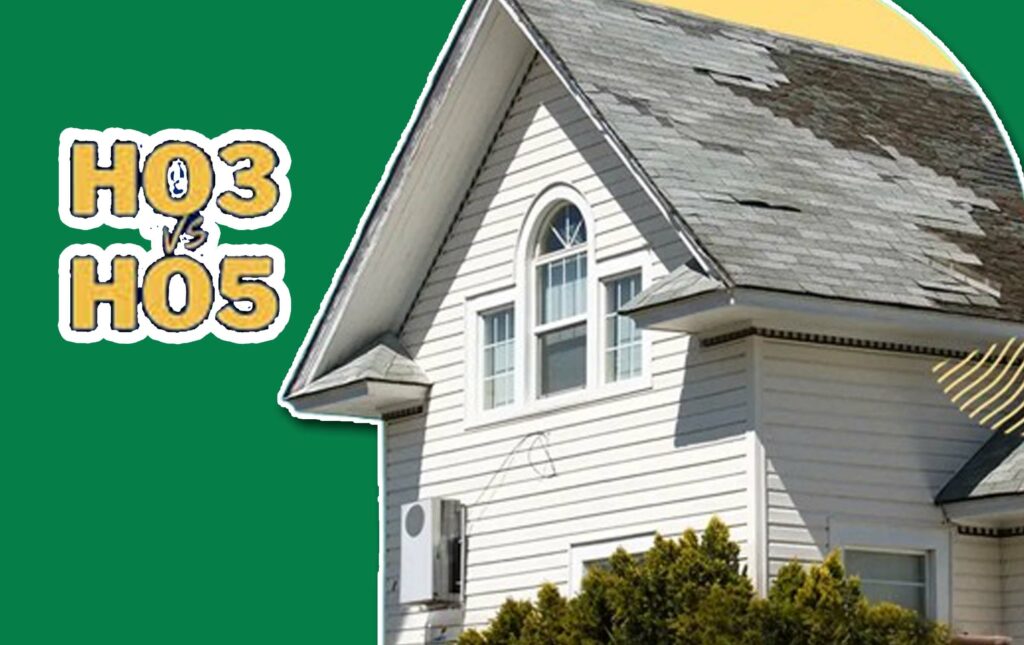HO-3 vs HO-5 Insurance for Homeowners – Homeownership comes with several responsibilities, and one of the most important is protecting your home with the right insurance coverage. Choosing the right policy type can significantly affect how well your property and belongings are protected in the event of loss, theft, or damage.

Two of the most common types of homeowners insurance policies in the United States are HO-3 and HO-5. While both offer protection for your home and possessions, the level of coverage and the conditions they cover can differ widely. Understanding the difference between these two policy types will help you make an informed decision. This will ensure your home is adequately protected without paying for unnecessary coverage.
Understanding the HO-3 Policy
The HO-3 policy, also known as a Special Form Policy, is the most commonly purchased homeowners insurance policy in the country. It provides a balance between affordability and protection, making it a popular choice for average homeowners. Under an HO-3 policy, the structure of your home. This including the roof, walls, foundation, and built-in appliances, is covered on an open-perils basis. This means that any damage to your dwelling is covered unless it is specifically excluded in the policy. Common exclusions may include natural disasters like floods or earthquakes, wear and tear, mold, and intentional damage.
However, when it comes to personal property, such as furniture, electronics, and clothing, HO-3 policies work on a named-perils basis. This means that your insurance only covers losses caused by specific risks listed in the policy, such as fire, theft, vandalism, or windstorm. If the cause of damage or loss is not named in the policy, it will not be covered. For instance, if your laptop is damaged by a power surge and power surges are not listed among the covered perils, the policy will not pay for repairs or replacement.
HO-3 policies typically also include liability protection, which covers you if someone is injured on your property. Or if you accidentally cause damage to someone else’s property. It may also include loss of use coverage, which helps pay for additional living expenses. Such as hotel stays or meals, if you are forced to move out temporarily while your home is being repaired after a covered event.
Understanding the HO-5 Policy
The HO-5 policy, often referred to as a Comprehensive Form Policy, offers broader protection than the HO-3. It is considered a premium version of homeowners insurance. And is ideal for homeowners who want more extensive coverage or who own high-value homes or possessions. Unlike the HO-3, the HO-5 policy provides open-perils coverage for both the structure of the home and the personal property. This means that unless the cause of damage or loss is specifically excluded, it will generally be covered under the policy.
This type of policy is particularly beneficial for homeowners with valuable personal items. Such as jewelry, fine art, high-end electronics, or designer furniture. With an HO-5 policy, personal belongings are protected against a wider range of risks. This includes many that may not be named in an HO-3 policy. For example, damage caused by accidental breakage, mysterious disappearance, or certain natural occurrences may be covered, depending on the insurer.
HO-5 policies also typically come with higher coverage limits for personal property and lower deductibles. This9nh means you can recover more of your loss in the event of a claim. In addition, they often include replacement cost coverage rather than actual cash value, meaning the insurer will pay the cost to replace your damaged. Or stolen property with a new item of similar kind and quality without deducting depreciation.
HO-3 vs HO-5 Insurance for Homeowners
The main difference between HO-3 and HO-5 policies lies in the scope of coverage and claim flexibility. The HO-3 policy provides limited protection for personal property by only covering named perils. While the HO-5 extends coverage to all perils except those specifically excluded. This makes the HO-5 policy more comprehensive and more suitable for individuals who want peace of mind knowing that their belongings are protected from most unforeseen events.
Another major difference is the cost. HO-5 policies are typically more expensive than HO-3 policies because of the broader coverage and higher payout potential. However, for homeowners with valuable assets or those living in areas prone to unexpected events, the additional cost may be worthwhile. The claim process can also differ; since HO-5 policies automatically cover most types of loss. It can be easier to file a claim without worrying about whether the peril is listed.
While HO-5 offers broader coverage, HO-3 can still be customized with endorsements or riders that extend its protection. For example, you can add endorsements for water backup, earthquake coverage. Or higher limits on valuable items like jewelry and artwork. This flexibility allows homeowners to tailor their policies to suit their specific needs and budgets.
Choosing Between HO-3 and HO-5
When deciding between an HO-3 and HO-5 policy, it is essential to consider factors such as the value of your home, the type of belongings you own, your budget, and your risk tolerance. If you live in a modest home and are primarily concerned about common perils like fire or theft, an HO-3 policy may be sufficient and more affordable. On the other hand, if you have expensive personal belongings or want coverage for a broader range of risks, an HO-5 policy may provide better long-term value.
It is also important to compare quotes from multiple insurance companies and review what each policy includes or excludes. Some insurers may label their policies differently, and coverage details can vary even among policies with the same name. Always read the fine print carefully and ask your insurer or agent to explain any terms you do not understand.
Conclusion
Both HO-3 and HO-5 policies serve the same purpose of protecting your home and possessions. But they differ in how comprehensive that protection is. The HO-3 policy remains the most common choice because it offers a good balance between cost and coverage. While the HO-5 policy provides superior protection for those who need more inclusive coverage for their property and belongings.
Ultimately, the right choice depends on your personal situation, the value of your assets. Also, how much risk you are willing to bear. By understanding the distinctions between these two types of homeowners insurance, you can choose a policy that offers both financial protection and peace of mind.



